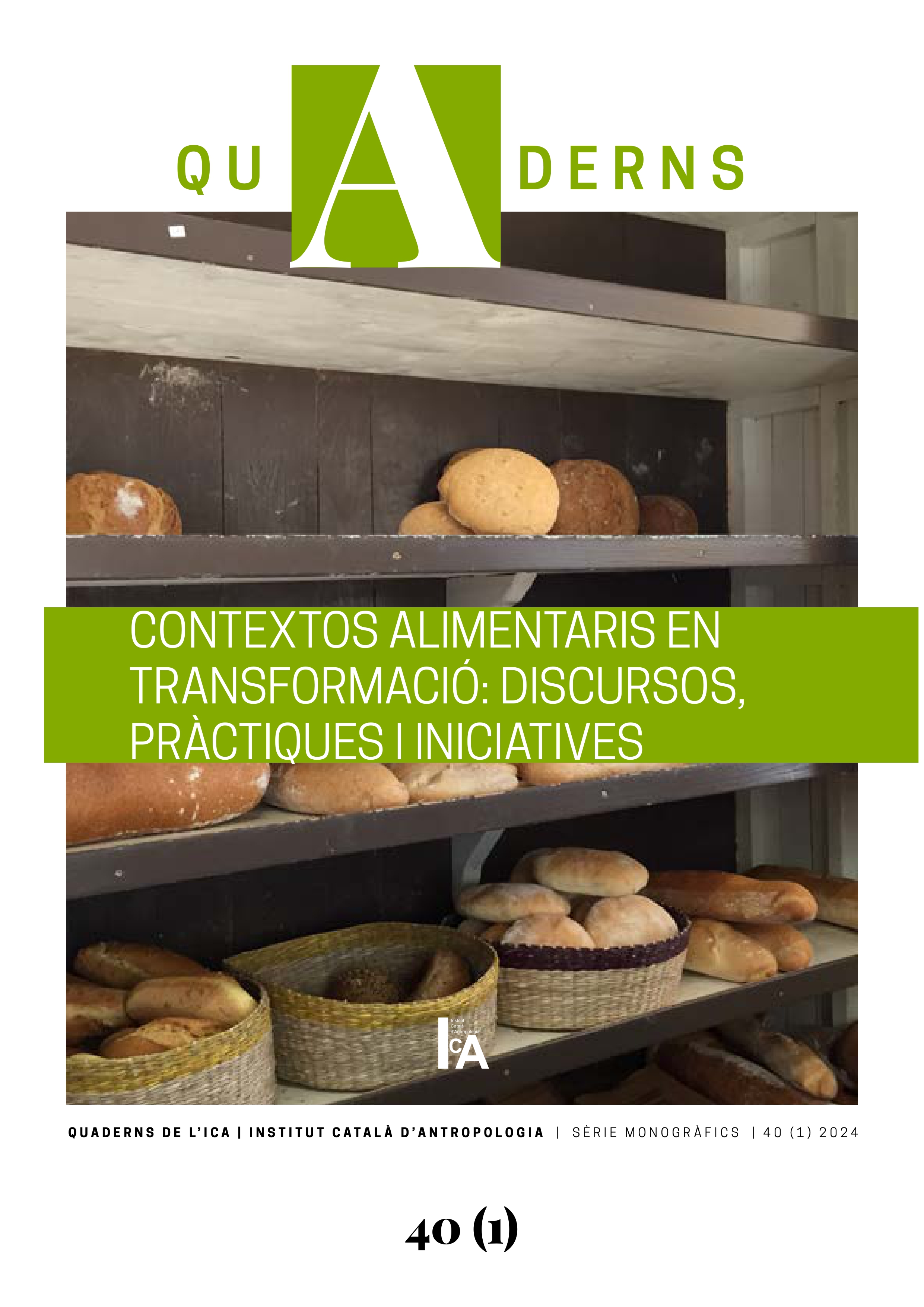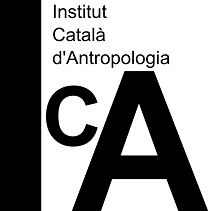Cultivant arrels: migració, alimentació i cultiu en un hort urbà okupat
DOI:
https://doi.org/10.56247/qua.469Palabras clave:
Agricultura urbana, sobirania alimentària, migració, cultiu ecològic, contaminacióResumen
L’article reflexiona sobre alimentació, cultura i salut a partir de l’experiència d’un hort urbà okupat amb una alta participació migrant. Durant els quasi tres anys que ha durat el projecte de l’Horta Alliberada de Sant Cugat (HA), aquest ha estat un espai on més de 60 famílies, la majoria migrants llatinoamericanes, han cultivat en parcel·les de 20m2. La recerca, de tall etnogràfic, explora l’espai de cultiu com una esfera on es reprodueixen paisatges, pràctiques alimentàries i tradicions culturals dels països d’origen, i on es creen i reforcen vincles i xarxes de solidaritat entre ‘paisanas’. El cultiu en aquest espai ens convida a reflexionar sobre la sobirania alimentària i la importància de l’alimentació en la (re)producció d’identitat. L’HA, tot i situar-se en un antic terreny industrial, és conceptualitzat per les hortolanes com un espai ecològic regenerador que aporta positivament al mediambient. El propòsit d’aquest article és explorar el rol de la identitat migrant en l’alimentació i l’agricultura urbana, indagar en el concepte de sobirania alimentària i examinar les contradiccions de la construcció d’una narrativa de cultiu ecològic i saludable que minimitza la percepció del risc de contaminació per tòxics.
Descargas
Estadísticas globales ℹ️
|
263
Visualizaciones
|
123
Descargas
|
|
386
Total
|
|
Citas
Abbots, E.-J. (2016). Approaches to food and migration: Rootedness, being and belonging. The Handbook of Food and Anthropology, 115–132. https://doi.org/10.5040/9781474298407.0013 DOI: https://doi.org/10.5040/9781474298407.0013
Baby-Collin, V., Medina, L., Miret, N., [et al.] (2014) Territorios bolivianos en las metrópolis españolas: Madrid y Barcelona. Dins Solé, C., Parella, S., Petroff, A., [et al.] (coords) Las migraciones bolivianas en la encrucijada interdisciplinar: evolución, cambios y tendencias, (p. 55-74). Bellaterra: Universitat Autònoma de Barcelona. CER MIGRACIONS, Servei de Publicacions. https://ddd.uab.cat/record/129438
Canha, N., Jafarova, M., Grifoni, L., Gamelas, C. A., Alves, L. C., Almeida, S. M., i Loppi, S. (2023). Microplastic contamination of lettuces grown in urban vegetable gardens in Lisbon (Portugal). Scientific Reports, 13(1). https://doi.org/10.1038/s41598-023-40840-z DOI: https://doi.org/10.1038/s41598-023-40840-z
Cattaneo, C., i Di Mauro, S. E. (2015). Urban squats as eco-social resistance to and resilience in the face of capitalist relations: Case studies from Barcelona and Rome. Partecipazione e Conflitto, 8(2). https://doi.org/10.1285/i20356609v8i2p343
Centre d’Estudis i Recerca en Migracions (2014). A modo de conclusión : el estudio de las migraciones bolivianas en la encrucijada de la interdisciplinariedad. Dins Solé, C., Parella, S., Petroff, A., [et al.] (coords) Las migraciones bolivianas en la encrucijada interdisciplinar: evolución, cambios y tendencias (p. 154-163). Bellaterra: Universitat Autònoma de Barcelona. CER MIGRACIONS, Servei de Publicacions. https://ddd.uab.cat/record/129438
Chan, J., Pennisi, L., & Francis, C. A. (2016). Social-Ecological Refuges: Reconnecting in Community Gardens in Lincoln, Nebraska. Journal of Ethnobiology, 36(4), 842-860. https://doi.org/10.2993/0278-0771-36.4.842 DOI: https://doi.org/10.2993/0278-0771-36.4.842
Clos, B. (2023). “Sembrar un trocito de Bolivia en Sant Cugat del Vallès”. Cultiu i solidaritat migrant en un hort urbà comunitari. [Treball de Fi de Grau no publicat]. Universitat de Barcelona.
Espeitx, E. (2012). La vivencia del cambio alimentario en la migración. Dins M. Gracia Arnaiz (Ed.), Alimentación, salud y cultura: encuentros interdisciplinares: Vol. Antropologia Mèdica (p. 381-895). Universitat Rovira i Virgili, Publicacions URV.
Ghose, R., i Pettygrove, M. (2014). Urban Community Gardens as Spaces of Citizenship. Antipode, 46(4). https://doi.org/10.1111/anti.12077 DOI: https://doi.org/10.1111/anti.12077
Gorospe, J. (2012). Growing greens and soiled soil: Trends in heavy metal contamination in vegetable gardens of San Francisco. [Treball Final de Màster]. San Jose State University. https://doi.org/10.31979/etd.emgr-wkv4 DOI: https://doi.org/10.31979/etd.emgr-wkv4
Ginn, F., i Ascensão, E. (2018). Autonomy, Erasure, and Persistence in the Urban Gardening Commons. Antipode, 50(4). https://doi.org/10.1111/anti.12398 DOI: https://doi.org/10.1111/anti.12398
Harris, N., Minniss, F. R., i Somerset, S. (2014). Refugees connecting with a new country through community food gardening. International Journal of Environmental Research and Public Health, 11(9). https://doi.org/10.3390/ijerph110909202 DOI: https://doi.org/10.3390/ijerph110909202
Hondagneu-Sotelo, P. (2017). At home in inner-city immigrant community gardens. Journal of Housing and the Built Environment, 32(1). https://doi.org/10.1007/s10901-015-9491-0 DOI: https://doi.org/10.1007/s10901-015-9491-0
Inmiscuir. (2023). Dins Diccionario de la lengua española (versió online). Real Academia Española. https://dle.rae.es/inmiscuir
L’Etnogràfica. (n.d.). Pensem l’alimentació: Parlem d’identitats i significats. https://letnografica.org/pensem-lalimentacio-parlem-didentitats-i-significats/
Malone, M., Hamlin, S., i Richard, S. I. (2023). Uprooting urban garden contamination. Environmental Science and Policy, 142, 50-61. https://doi.org/10.1016/j.envsci.2023.01.016 DOI: https://doi.org/10.1016/j.envsci.2023.01.016
Mares, T. M., i Peña, D. G. (2010). Urban agriculture in the making of insurgent spaces in Los angeles and Seattle. Dins J. Hou (Ed.), Insurgent Public Space: Guerrilla Urbanism and the Remaking of Contemporary Cities (p. 253-267). Routledge. DOI: https://doi.org/10.4324/9780203093009-31
Mata Codesal, D. (2010). Eating abroad, remembering (at) home. Three foodscapes of Ecuadorian migration in New York, London and Santander. Anthropology of Food, (7). https://doi.org/10.4000/aof.6642 DOI: https://doi.org/10.4000/aof.6642
Miller, D. (2017). Anthropology is the discipline but the goal is ethnography. HAU: Journal of Ethnographic Theory (Vol. 7, Número 1). https://doi.org/10.14318/hau7.1.006 DOI: https://doi.org/10.14318/hau7.1.006
Nyéléni. (2007). Declaración de Nyéléni. https://nyeleni.org/IMG/pdf/DeclNyeleni-es.pdf
Patil, C. L., McGown, M., Nahayo, P. D., i Hadley, C. (2010). Forced migration: Complexities in food and health for refugees resettled in the United States. NAPA Bulletin, 34(1), 141–160. https://doi.org/10.1111/j.1556-4797.2010.01056.x DOI: https://doi.org/10.1111/j.1556-4797.2010.01056.x
Pujadas, J. J. (2010). La etnografía como proceso de investigación. La experiencia del trabajo de campo. Dins D. Comas d’Argemir, J. J. Pujadas Muñoz, & J. Roca i Girona (Ed.), Etnografía (p. 271-311). UOC.
Strunk, C., i Richardson, M. (2019). Cultivating belonging: refugees, urban gardens, and placemaking in the Midwest, U.S.A. Social and Cultural Geography, 20(6). https://doi.org/10.1080/14649365.2017.1386323 DOI: https://doi.org/10.1080/14649365.2017.1386323
Sung, C. Y., i Park, C. B. (2018). The effect of site- and landscape-scale factors on lead contamination of leafy vegetables grown in urban gardens. Landscape and Urban Planning, 177, 38-46. https://doi.org/10.1016/j.landurbplan.2018.04.013 DOI: https://doi.org/10.1016/j.landurbplan.2018.04.013
Vía Campesina. (1996). Declaración de Roma de la Vía Campesina que define por primera vez la Soberanía Alimentaria. https://viacampesina.org/es/1996-declaracion-de-roma-de-la-viacampesina-que-define-por-primera-vez-la-soberania-alimentaria/
Wong, R., Gable, L., i Rivera-Núñez, Z. (2018). Perceived Benefits of Participation and Risks of Soil Contamination in St. Louis Urban Community Gardens. Journal of Community Health, 43(3), 604-610. https://doi.org/10.1007/s10900-017-0459-8 DOI: https://doi.org/10.1007/s10900-017-0459-8
Descargas
Publicado
Cómo citar
Número
Sección
Licencia
Derechos de autor 2024 © 2024 ICA. © 2024 Blu Clos Cirici. Aquest és un article d’accés obert distribuït sota els termes de la llicència d’ús i distribució Creative Commons Reconeixement 4.0 Internacional (CC BY-NC-SA 4.0)

Esta obra está bajo una licencia internacional Creative Commons Atribución-NoComercial-CompartirIgual 4.0.
Distribuït sota els termes de la llicència d’ús i distribució Creative Commons Reconeixement 4.0 Internacional (CC BY-NC-SA 4.0)




